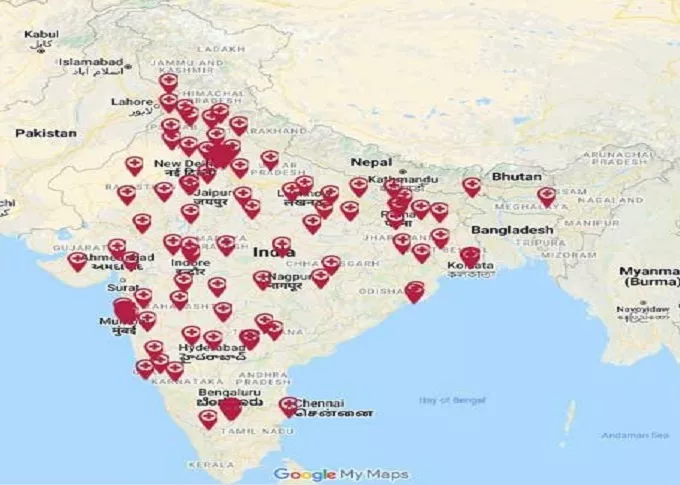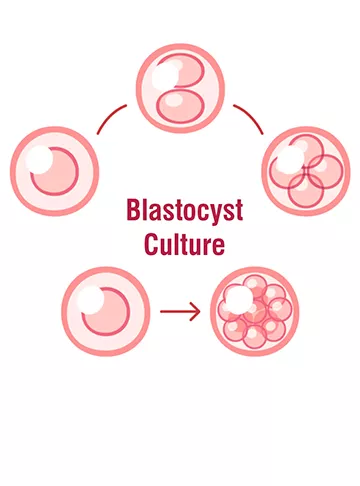What is Blastocyst Culture and Transfer?
Blastocyst culture is the process of growing the embryo in the laboratory for two or more days until they are referred to as a blastocyst embryo. The frozen blastocyst transfer is done on the fifth day, and it is the final stage of embryo development before it comes out of the egg by breaking the Zona Pellucida and then plants itself in the uterine wall.
Until recently, it was challenging to culture embryos to the blastocyst stage. As a result of scientific advancements, culture mediums have been created that imitate the changing conditions of the reproductive system and are tailored to the specific needs of the embryo as it passes through the fallopian tubes. In a laboratory setting, 65% of embryos successfully develop to the blastocyst stage. The blastocysts contain two different cells types –
- The inner cell mass that develops into a foetus
- The outer layer that forms into the placenta
When is Blastocyst Culture recommended?
Usually, blastocyst culture is recommended in various situations –
- As Blastocyst culture has a greater success rate than Day 3 of Embryo Transfer, it is suggested to couples who have had prior failures with IVF or ICSI despite having numerous good-quality eggs recovered. In these circumstances, blastocyst culture allows the doctor the chance to examine any irregularities in the embryo's development between days three and six.
- Blastocyst Transfer on Day 5 is advantageous for couples seeking Elective Single Embryo Transfer (eSET) since it increases the likelihood of conception compared to the more common Day 3 Embryo Implantation for a single embryo.
- Preimplantation Genetic Diagnosis, or PGD, is a ground-breaking medical procedure that increases the possibility of producing a healthy baby when one or both partners have a genetic problem by lowering the risk of passing the condition on to the child. Embryo biopsy, a procedure used in PGD, removes one or two cells from the developing embryo and performs a genetic analysis. Afterwards, only the healthy embryos are returned to the uterus.
- Couples that have several healthy embryos on day three are also recommended blastocyst culture. The embryologist can choose the embryo(s) most likely to implant by watching the frozen embryo develop into a blastocyst throughout this lengthy culture. Fewer embryos should be transferred on day 5, lowering the possibility of multiple pregnancies, thanks to the screening procedure of embryo(s) for transfer.
What are the advantages of Blastocyst Culture?
An embryo's appearance cannot dependably foretell implanted blastocyst development or implantation potential. It may be challenging to decide which embryos have the best chance of developing into a healthy pregnancy early in the embryonic process. By holding the embryos in the lab until day 5, when they start to develop into blastocysts, any variations between them can become more obvious. Hence, when there are a variety of embryos to choose from, blastocyst culture enables the embryology team to choose the best embryos for transfer.
Up to 60% of each blastocyst has the potential to implant. A healthy singleton pregnancy is more likely to happen with the transfer of a single blastocyst with a high implantation rate. Remember that multiple blastocyst implantation might cause multiple births.
What are the risks of Blastocyst Culture?
The potential risk of blastocyst transfer is the possibility that some embryos won't make it through five days of culture outside the human body. As a result, there will be fewer embryos overall that are accessible for freezing and transfer. After day 3, the embryos cease maturing, and therapy ends without the possibility of an IVF embryo transfer for a tiny percentage of couples (5%). This condition is referred to as embryonic block and may be the root cause of infertility.
How is Blastocyst Transfer done?
A blastocyst transfer follows a similar procedure to an In Vitro Fertilization (IVF). The age of the embryo during implantation is the sole difference between a blastocyst transfer and a standard IVF cycle procedure. An embryo is roughly four days old, but a blastocyst transfer requires an embryo to be six days old. The following steps are involved in the blastocyst transfer –
- The first step is egg collection. It is a simple process that takes no more than 30 minutes and is painless. During the operation, eggs are extracted from fully developed follicles utilising a scanning probe.
- The eggs, after harvesting, are fertilised with the male partner or donor sperm.
- In a lab incubator, the embryos produced after fertilisation are kept until they reach the blastocyst stage. These embryos are more likely to resist and thrive in a uterine environment after reaching the six-day mark in an incubator. The other blastocysts are cryopreserved for later use, and only the healthiest ones are placed into the uterus.
- An embryo is called a blastocyst once it has reached the six-day mark. This stage is perfect for the blastocyst to be implanted in the uterus. An embryologist carefully inserts the healthiest blastocyst into the uterus once it has grown robust enough to withstand the uterine environment.
- You will be asked for a pregnancy test about two weeks following your IVF surgery to determine whether the blastocyst transfer was successful. An ultrasound will be performed if you've been pregnant for six weeks.
- Always follow up with your concerned doctors. Being diligent with your follow-ups is always a good idea if your blastocyst transfer is successful. Regular check-ups might prevent problems in the future. For optimistic parents, surgeries that don't turn out well might occasionally be emotionally demanding.
Pregnancy Calculator Tools for Confident and Stress-Free Pregnancy Planning
Get quick understanding of your fertility cycle and accordingly make a schedule to track it
Get a free consultation!















